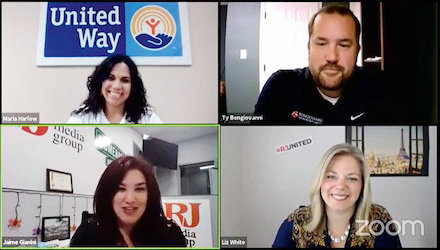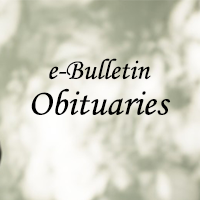There’s a reason we need a free press, despite its faults and foibles: Democracy won’t work without it.

The grand experiment in self-governance that is the United States is rooted in trust and confidence we all will work toward the greater good. But the nation’s founders had experience with a king and his expected benevolence — and what could happen when things didn’t work out.
So, they provided for three branches of government to balance each other, along with periodic elections and the rights for us to assemble and seek change when we think things have gone astray.
All fine, but also relatively long-term solutions. How do we know what our government is doing, how well it is operating or whether our elected officials are up to the job?
Enter the only profession mentioned in the Constitution: A free press, to serve as a “watchdog on government.” A free press the government cannot control, to offer an independent, regular update on behalf of the rest of us.
Let’s stop to acknowledge that many of us are dissatisfied with the free press we have. Survey after survey shows low public trust in our news outlets and in the journalists who staff them.
But in those same Freedom Forum surveys about the First Amendment that began in 1997, the desire for that watchdog role remains high, often supported by a majority of people questioned.
How can these two results co-exist? The answers rest in what kind of press we mean. Much of the highly visible kerfuffle on social sites today concerns national reporting, and more narrowly, the political pundits on cable TV and the tiny percentage of journalists who are the White House press corps.
For most of us, today’s journalism is something different — and much more relevant to us. We see a news media bringing us the day-to-day information we need to live our lives: What local officials are saying, weather forecasts and crime, health and safety reports for our communities. The work of journalists helps us get things done. Reporters ask the questions we would ask if we could be there.
Jurors in Des Moines, Iowa, this week appeared to support the role of journalists as watchdog when they acquitted reporter Andrea Sahouri, who was arrested while covering a Black Lives Matter protest despite her repeated protestations that she was a journalist.
Local journalists, who are the vast majority of the 24,000-plus on the job today, live in the communities on which they report. In just the past month, they have reported on COVID-19 vaccination programs — both the successes and failures by officials we depend upon to keep us safe and fight the pandemic.
Other recent stories told by big and small news operations alike will benefit hundreds of thousands, if not millions of us.
A report on nursing homes in New York state disclosed they may have tested unproven COVID-19 treatments on residents, despite safety warnings, without telling family members. A news partnership in South Carolina found the state has dropped virtually all oversight of local officials’ activities, leading to “questionable or illegal perks of holding public office.” In Mississippi, residents now know a biodiesel plant is accused of illegally dumping hazardous material into public waterways.
Throughout our nation’s history, it has been a free press that has probed, prodded and produced safer food and medicines and helped reveal waste, fraud and abuse of public trust.
Reporters uncover these stories only by poring over records, reviewing court documents and interviewing sources — activities most of us don’t have the time, skill or opportunity to do.
The guarantee that a press is free does not guarantee it will always be good or correct, or that we will like what it presents. But there are more ways than ever to get news and information and to find reports we can trust or verify.
Ironically, the newest source for news and information has helped create some of the greatest threats to a free press in the nation’s history:
- The web has decimated financial support for traditional media, and newer media is not yet robust enough to take its place. This results in “news deserts,” where no regular sources of journalism exist.
- Misinformation can now spread across the globe in milliseconds, sowing doubt, confusion and mistrust of the reports and motives of a free press.
- The free press in any form has been weakened by cuts in staff, with surveys showing the ranks to be less than half of what they were 20 years ago.
Not all the news about a free press is bleak. New financial models are being tested. Collaborations between news organizations and nonpartisan expert collectives have shown results. New attention is focused on regrowing the ranks of local journalism. But more is needed, from increased public support to new revenue sources to regaining the public trust.
On March 16, we celebrate the birthday of James Madison, the principal author of the First Amendment and the rest of the Bill of Rights. He called a free press “one of the great bulwarks of liberty.”
This generation, perhaps unlike any other, is being called on to defend that bulwark and, in the process, protect our liberty.












Raising our collective voice during Sunshine Week March 14-20
With Sunshine Week happening on March 14-20, we invite you to hold our government leaders and agencies accountable by running an editorial on the importance of open government.
Please join us in raising our collective voice for transparency and access to public information, and what it means for your readers and community.
This is a call for action on the importance of open government. Please publish an editorial during Sunshine Week, March 14-20. Write your own or you can use one of the two below. To educate your staff or readers a list of free Sunshine Week webinars is also included below.
Let us know that you’ll be participating and we’ll collect all editorials submitted and feature them in our eBulletin at the end of the month.
Yes We Will Participate
Contact Tara Cleary at t.cleary@nenpa.com with any questions.
You Can’t Have Democracy Without A Free Press
Open government is key to honest government
SUNSHINE WEEK FREE WEBINARS
There are no upcoming events to display at this time.